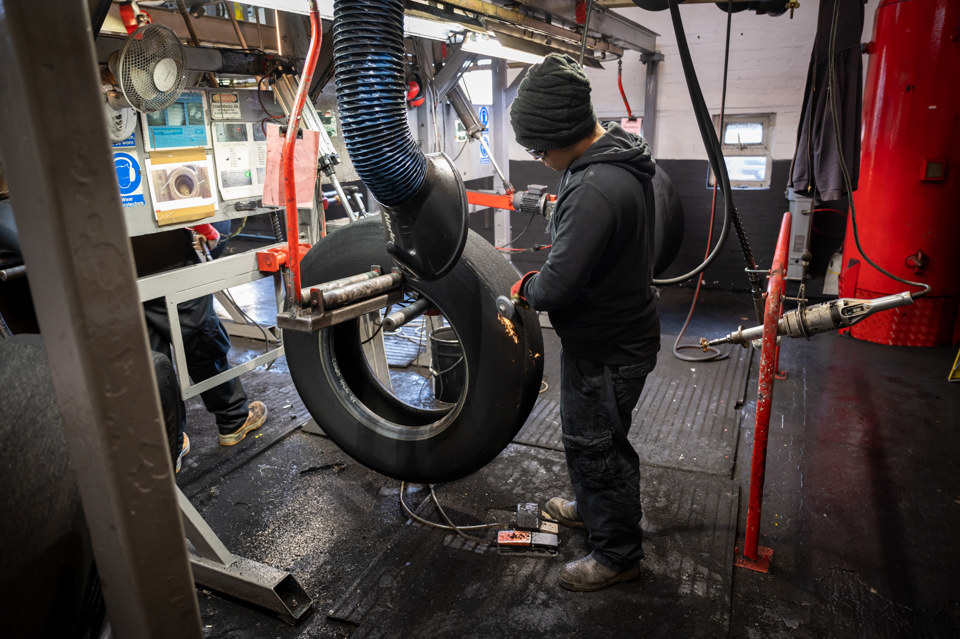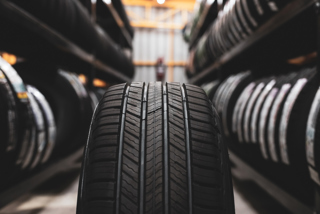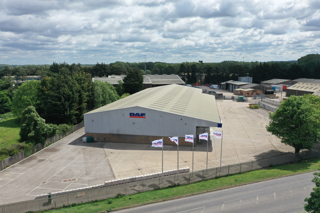Truck fleet operators under pressure to cut their carbon footprint and boost their green credentials should start fitting retread tyres, says Michelin.
Just 20kg of raw materials needs to be added to a truck tyre casing on average to create a Michelin Remix retread, it says.Manufacturing a new tyre from scratch requires 70kg, so choosing a retread results in a 70% material saving.
Purchase 100 retreads in preference to their new equivalents and you have achieved a raw material saving of up five tonnes, the manufacturer contends. More than six tonnes of CO2 emissions are saved too.
"Retreading is more sustainable and environmentally-friendly than new tyre production,” says Andrew French, UK business-to-business sales director at Michelin.
Goodyear says that making a retread consumes 56% less crude oil than making a new tyre. According to its Sustainability Reality Survey, three out of four fleets across Europe recognise reduction of their carbon footprint as an important issue and 42% of them are using retreaded tyres.
Giti Tire estimates that retreading a tyre saves 68 litres of oil, 44kg of rubber and 88kg of CO2.
Aware that the environmental benefits of retreads are in tune with the mood of the times, tyre manufacturers are investing in their development and in the production facilities needed to build them.
Since Continental bought long-established retreader Bandvulc in 2016, it has spent £1.5m annually on its factory at Ivybridge in Devon.
Now operating under the ContiLifeCycle banner, but continuing to develop and produce Bandvulc products alongside the ContiRe retread range, the increasingly-automated plant makes 3,500 to 4,000 retreads a week.
One of the big material savings achieved by opting for retreads is the reuse of the steel used to construct the tyre’s casing, says Tony Mailling. He is Continental’s head of hot-cure retread production for Europe, the Middle East and Africa, and plant manager for ContiLifeCycle Ivybridge and Stocken, the manufacturer’s retreading plant in Germany.
"Steel manufacturing is energy-intensive and contributes significantly to a tyre’s environmental impact,” he says. “When we retread tyres, we don’t need to add new steel.”
Hot-cure retreads
With hot-cure retreads, new rubber is applied to a previously-used and thoroughly-inspected casing which has had its old tread stripped off. A tread is moulded onto the new rubber in a doughnut-shaped press at a temperature of up to 200 degrees C for around an hour-and-a-half.
Ivybridge concentrates on hot-cure products and all the Remix retreads sold in the UK are made using hot-cure technology. In mainland Europe, however, Michelin sells pre-cure retreads alongside its hot-cure products under the Recamic banner.
The pre-cure approach involves applying ready-formed treads to casings which are then put in a rubber bag. All the air is exhausted from the bag and the tyre is cured in an oven at 115 degrees C for just over four hours.
French makes no apologies for selling only hot-cures on this side of the Channel. “Remember that hot-cure represents around 70% to 75% of the total British market,” he says.
He will not rule out launching Recamic pre-cures in Britain, but cannot say when this might happen.
Hot-cure retreading is a bead-to-bead process which includes renewal of the tyre’s sidewalls. The net result is a product that looks like a new tyre.
Pre-cure tyres do not enjoy this aesthetically-pleasing appearance, and past problems with the durability of some pre-cures have made some fleets wary of them; however unfair this stance may be. Even though any issues may have been resolved many years ago, and quality pre-cures are readily available, transport managers have long memories.
While including Bandag pre-cure retreads in its product portfolio, Bridgestone too points to the popularity of hot-cures in the UK. It estimates that retreads account for around 24% of the heavy commercial tyres sold in the UK annually and is determined to make the most of the opportunity this presents.
It has started promoting its hot-cure retreads under the Bandag Hotread banner, with 17 new products now being added to the output of its long-established Bourne, Lincolnshire, retreading plant.
“It’s not really the case that Bandag pre-cures are falling out of favour," says Mike Howling, Bridgestone’s service operations business partner, North Europe region. Large numbers of fleet customers are using them successfully.
“However, we recognise the importance and popularity of hot-cure in the UK, so we’ve decided to offer a much wider selection to meet customer needs and preferences,” he says.
“There is no evidence of either type of retread being better or worse in terms of tread separation (i.e. the tread parting company with the casing) and studies in recent years have proved that concerns about retreads, whether hot-cure or pre-cure, are completely unjustified."
30% cost saving
Pursue the retread route and your fleet will not lose out financially, its proponents insist. A premium retread costs approximately 30% less than a premium new tyre, says Michelin.
Its Remix brand denotes rather more than retreading, and is used as shorthand for a four-life programme which Michelin operates in conjunction with its dealers.
It begins with a new tyre which is regrooved by a specialist technician once the tread depth has worn down to 3mm to 4mm. It is sent for retreading once the depth has reached 1mm – Michelin has been retreading tyres at its Stoke-on-Trent plant since 1968 - then regrooved once again at 3m to 4mm.
Thereafter it may face disposal, with the materials it contains recycled as far as possible. Rubber granules are used in sports surfaces for example.
Every time a tyre is regrooved its potential mileage is extended by 25%, says Michelin. Retreading lengthens it by 100%.
This means that the Remix scheme can boost the anticipated mileage of a new Michelin tyre by a hefty 150%.
Goodyear offers a similar new/regroove/retread/regroove package as do other tyre makers, and contends that it can cut overall tyre bills by 10%.
Regrooving brings a further cost and environmental benefit says Michelin. It improves fuel efficiency by around 5% and reduces the fleet’s CO2 output at the same time.
Remix tyres are all based on Michelin casings. However the Stoke factory also operates the Encore programme.
Encore includes retreads based on casings made by Michelin’s competitors as well as Remixes which are being retreaded for the second time.
Long-established industry convention dictates that retreads are not fitted to front steer axles.
Steady improvements in quality mean that this is not so much driven by a fear that they will fail in this role these days, but more because retreaders need a steady stream of tyres that have not been retreaded previously. Steer axles fulfil this requirement.
With 116 trucks, Palnackie, Castle Douglas, Scotland-based transport operator T P Niven specifies new Michelin tyres on steer and trailer axles, and Remixes on drive axles. Fleet engineer Duncan McFegan says: “They perform like a new Michelin tyre, and in our experience outperform anything else on the market.
“We collect upwards of 1.5m litres of milk a day, and when you’re dealing with part-loads, even with baffles in the tank, you get milk surge,” he continues. “That causes the tyres to heat up and puts them at increased risk of failure.
“That can be a real issue for operators in our sector, but with our Michelin new and Remix policy established across the fleet, we aren’t getting any problems."
No loss in performance
Retreaders are certainly eager to stress that their products stand comparison with their new equivalents.
Giti Tire markets its hot-cure-only retreads under the Genesis banner, with its GTR991 385/65 R22.5 trailer tyre boasting an enhanced shoulder design said to provide better protection against kerbing damage.
Its GDR691 315/70 R22.5 drive-axle fitment comes with a tread compound designed to minimise heat generation, it adds; an excessive build-up of heat can wreck a tyre.
ContiRe retreads are solely based on Continental casings and Continental too stresses that opting for retreads need not mean losing out on performance. Its ContiRe EcoPlus HT3+ 385/65 R22.5 trailer tyre can achieve a cut in rolling resistance of up to 20%, it asserts, leading to better fuel economy and a smaller CO2 footprint.
The lives of retreaders might be made a little easier if fleet operators dedicated more time to looking after their tyres.
Ivybridge takes in 500,000 used tyres annually which are carefully examined before retreading begins.
Some 30% fail to make the grade because they have been too badly damaged in service while a further 10% are rejected because defects are found during the retreading process. The technology employed includes shearography, which Mailling says works in a similar way to an ultrasound scan, analysing the tyre’s core structure.
Any internal damage may have been caused by a tyre being run under-inflated for an extended period because the operator has failed to ensure that the correct pressure is maintained. Says Mailling: “You can tell if that has happened because you get a mottling effect. It changes colour.”
Under-inflation can shorten tyre life, result in higher fuel usage, and cause a tyre to fail while the truck is out on the highway. That means a stranded driver, a delivery slot missed, damage to the vehicle if the tyre has gone bang; and the loss of a valuable retreadable casing.
By John Lewis





















Login to comment
Comments
No comments have been made yet.